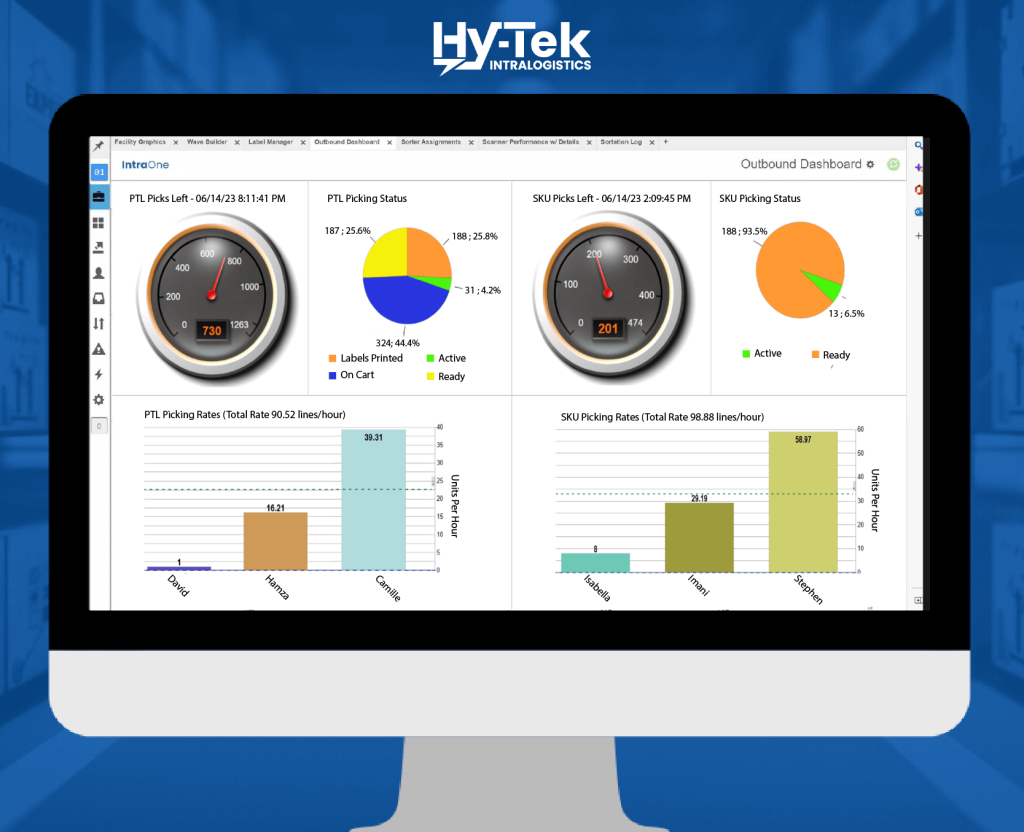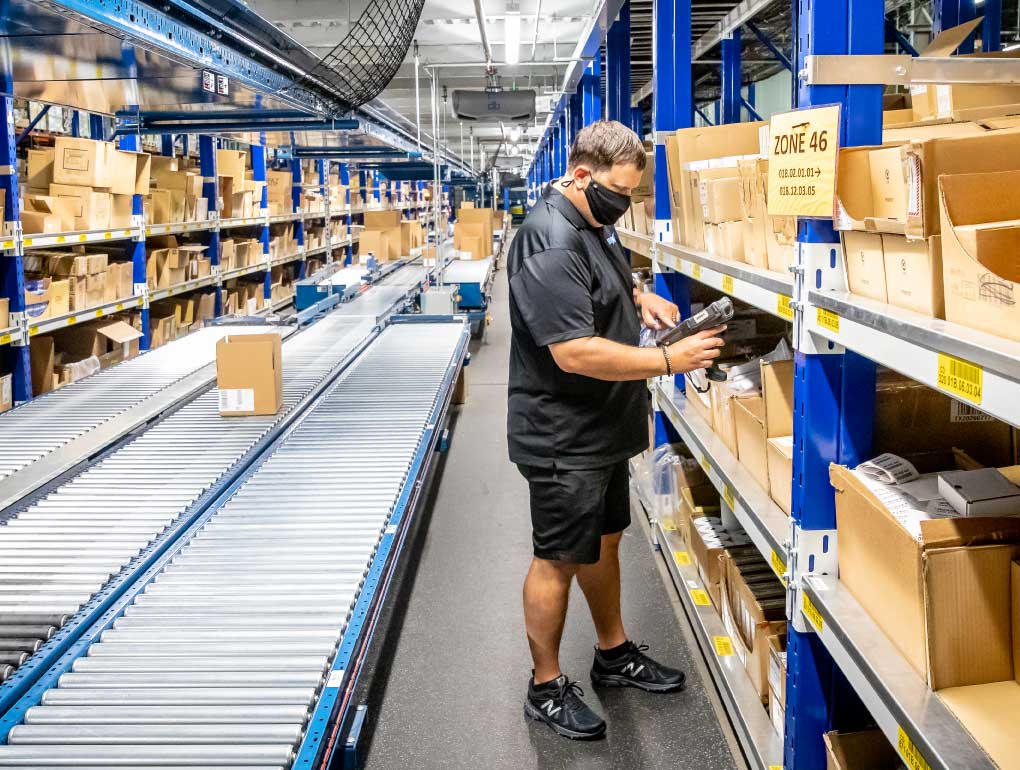Did you know that the average order picking accuracy is 99.4%? That means that out of 1,000,000 orders, 6,000 will be wrong, which means 6,000 unhappy customers.
So, how do you increase picking accuracy to maintain customer satisfaction?
With a warehouse warehouse picking software that utilizes advanced technologies like barcode scanning and real-time inventory tracking to ensure precise order picking, reducing errors and enhancing accuracy throughout the fulfillment process.\
The True Cost of Picking Errors
It’s often hard to visualize the entire chain reaction that is caused by inaccurate order picking. So, what is the real cost of picking errors?
- Lost sales
- Returns
- Additional shipping
- Customer service costs
- Repackaging
- Warehouse labor costs associated with restocking
When you total these picking error costs, it’s much easier to justify an investment in warehouse software that can minimize error.
How Warehouse Picking Software Increases Order Accuracy
Warehouse software plays a crucial role in increasing order accuracy by automating and streamlining the picking process. It uses various technologies and functionalities to ensure that the right items are picked and matched with the correct orders. Here’s a breakdown of how warehouse picking software achieves this:
What Is Warehouse Picking Software
Warehouse picking software is used by warehouse managers to plan and oversee picking processes and by warehouse workers to pick the orders. It is a function of a warehouse management system that is designed to streamline order fulfillment operations.

- Barcode Scanning: Most warehouse picking software utilizes barcode scanning technology. Each item in the warehouse has a unique barcode that contains essential information about the product, such as SKU (Stock Keeping Unit), product name, and other relevant details. Warehouse staff uses handheld barcode scanners or mobile devices with built-in cameras to scan the barcodes on the items.
- Order Verification: When a new order comes into the system, the software generates a pick list that includes all the items required to fulfill the order. As the warehouse staff pick items from the shelves, they use the barcode scanners to scan both the item’s barcode and the order barcode. The software verifies that the scanned item matches the one on the order list, ensuring that the right item is being picked for that specific order.
- Real-time Inventory Management: The picking software connects to the warehouse’s inventory management system in real-time. Whenever an item is scanned and picked, the software automatically updates the inventory database, reflecting the changes in stock levels. This real-time inventory management reduces the risk of picking items that are out of stock or unavailable.
- Pick Path Optimization: The software optimizes the picking route for warehouse staff. It generates the most efficient path to collect all the items for a batch of orders, reducing the distance traveled and the time spent on picking. This minimizes the chances of errors that could occur due to unnecessary movement or confusion.
- Visual and Audio Cues: Warehouse picking software can provide visual and audio cues to guide warehouse staff during the picking process. When an item is successfully scanned, the software may display a green checkmark or play a sound indicating that the correct item has been picked. If there’s an error, it may show a warning or provide instructions to rectify the issue.
- Error Prevention Measures: The software can include error prevention measures, such as highlighting high-risk items that are similar in appearance or have subtle differences in packaging. It can also prevent staff from picking expired or damaged items by flagging them in the system.
- Quality Control Checks: The software can incorporate quality control checks, prompting random item checks during the picking process. This ensures that picked items are thoroughly inspected for accuracy and completeness before they are packed and shipped.
- Advanced Picking: Warehouse picking software enables optimized order release policies and picking strategies such as batch picking. This further improves efficiency and reduces the likelihood of errors by minimizing the need to revisit the same location multiple times.
These software solutions enable warehouses and other distribution centers to optimize their pick and pack processes, with the goal of reducing errors and increasing efficiency.
Choosing A Picking Software For Your Warehouse
When it comes to reducing picking errors in the warehouse, one of the best solutions is to invest in warehouse management software or picking software. This type of software automates many of the tedious and labor-intensive tasks associated with inventory management and order fulfillment.
There are many vendors and types of order picking software, but here are some important considerations when selecting a picking software for your warehouse:
1. Look for software that is easy to use and understand. Complex interfaces can be difficult to learn, so make sure that the system you choose has an intuitive user interface that everyone on your team can easily learn.
2. Make sure the software integrates with other systems in your warehouse. This way, you can ensure that all data is accurately shared between systems and reduce errors due to manual entry or duplication of data.
3. Ensure that the system provides real-time tracking capabilities so you can monitor progress on each order and quickly resolve any issues if they arise. Knowing where every item is at any given time will also help reduce errors caused by misplacement or mislabeling of items.
4. Finally, look for a system with scalability options so you can easily increase capacity as needed without having to purchase additional hardware or software licenses. Having this flexibility will save you money in the long run as your business grows and expands its operations.
Conclusion
The use of warehouse picking software can have a huge impact on reducing picking errors, but it’s important to understand the associated costs and compatibility before investing. The good news is that most software solutions are user-friendly and can be integrated into existing warehouse systems with minimal disruption. Additionally, many vendors offer comprehensive training programs and technical support to ensure customers get the most out of their software.
How much does warehouse picking software cost?
The answer is not straightforward though as it depends on multiple factors:
1. The size of the warehouse: larger operations with more SKUs and more pickers will have higher software costs
2. Number of integrations: if you need to integrate with existing systems like ERPs, that will also increase cost
3. Training: depending on the complexity of the software, you may need extra training for your staff
4. Maintenance: software maintenance costs can add up over time
When making decisions about warehouse picking software, it’s important to weigh all these considerations carefully. Make sure you understand what features are included in each package and what type of support you’ll be able to access if needed. It’s a good idea to send request for proposals to multiple vendors, so you can compare prices and features.
Is warehouse picking software easy to use?
The answer, thankfully, is yes!
Warehouse picking software typically offers user-friendly interfaces, allowing employees to quickly learn how to navigate the system. This helps reduce training time and ensures that less time is wasted on mistakes.
Does warehouse picking software integrate with other existing systems?
Warehouse picking software can be a great tool for increasing efficiency and reducing errors in the warehouse. But is it compatible with existing systems?
When introducing new technology into an existing system, there are often compatibility issues that need to be addressed. It’s important to make sure that the new technology being used works with the existing hardware and software setup.
Here are some things to consider when evaluating if warehouse picking software is compatible with your existing warehouse systems:
– Is the software compatible with your current operating system?
– Are you able to integrate your current data into the software?
– Do you have access to customer support if any technical issues arise?
What type of support is available for warehouse picking software?
When it comes to warehouse picking software, a key question is what type of support is available. Having access to reliable customer service and technical support can be a crucial factor in choosing the right system for their needs.
This should include 24/7 support for troubleshooting technical issues, as well as user training and resources to help employees understand how to use the software correctly. Additionally, some systems provide ongoing maintenance and upgrades to ensure that the software remains up-to-date and compatible with existing warehouse systems.
What type of training is required?
Many vendors offer online tutorials and webinars that can teach users the basics of the product and provide an understanding of its capabilities. Other vendors may even provide hands-on training sessions with experts that can help ensure users get up to speed quickly.





